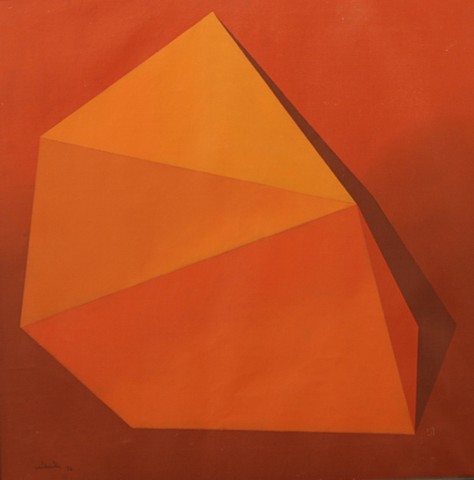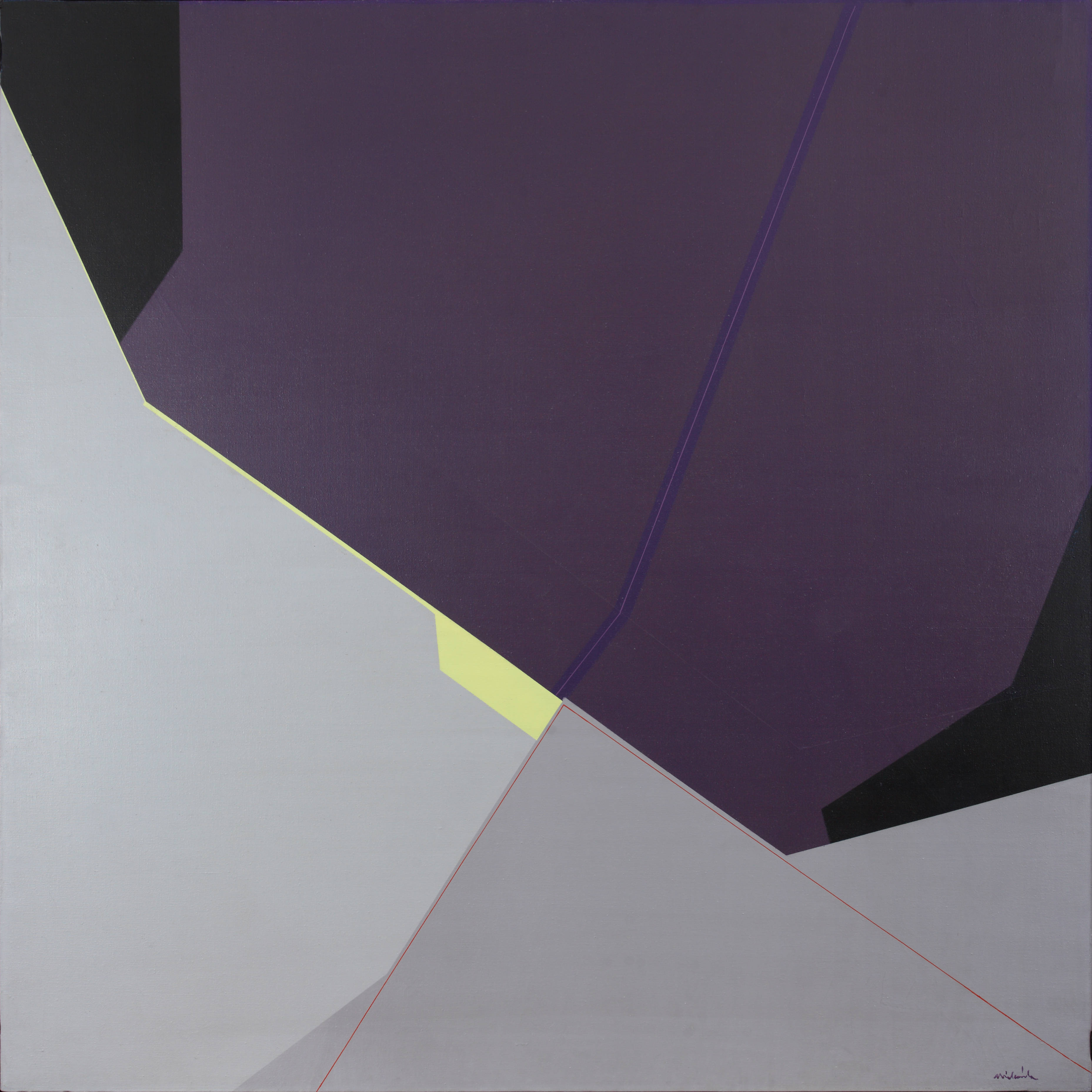
Within the outlook of the Valencian visual arts in the fifties decade, it is remarkable the figure of the painter Joaquín Michavila (L’Alcora, 1926). His careers is characterised for the tireless search of modernity within the realistic and “sorollistic” environment of the Valencia of the time. Trained at the San Carlos School of Fine Arts, he would wide aesthetic horizons in Italy. His will to overcome this anodyne artistic context lead him to participate in the most innovative group initiatives of the Valencian scene, as the Grupo Los Siete (1949-1954), the Grupo Parpalló (1956-1961), El Movimiento Artístico del Mediterráneo (1956-1961) or the Grupo Antes del Arte (1968-1969).
His first steps are located within the post-impressionist context and little by little his most noticeable interest was increasing towards the way of still lives and landscapes. In 1958 the step towards the abstraction is very evident and it will be maturing until leading to a geometry that reaches its peak period between 1968 and 1978. Michavila develops a transcendental painting, endowed with a great formal rigour with wide shots that diverge ones from others through lateral tensions. The black colour emphasises the area of maximum tension where the separation between masses and this between these “dark cracks” arise the shots of warm gamuts in red, brown, sienna, pink and yellow.
A partir de 1978 Michavila descobreix artísticament l'Albufera de València i es produeix un retrobament amb el paisatgisme dels seus inicis, que centrarà la seua atenció en el futur. Ara la seua mirada neofigurativa és molt més madura i crítica, amb la denúncia de l'agressió ecològica que aquest paratge natural pateix, víctima de la contaminació. Destaca la sèrie “El llac”, que tindrà les seues oportunes continuacions en “El riu” i “Espais acotats”. Tota sencera és un testimoniatge de vinculació afectiva i artística a la seua terra a través d'un element enormement valencià. Aquests espais destil·len l'aroma de les construccions i les formacions naturals amb els seus mil i un reflexos cristal·lins, i la seua riquesa cromàtica en terres, blancs, grisos, ocres, grisos blavencs. Amb el pas del temps, el caràcter gestual s'accentua i el color s'enriqueix amb la presència d'ataronjats, ocres clars, rojos, grisos tènues, etc. Els quadres repeteixen una vegada i una altra temes similars, però sense que s’hi estenga la monotonia, perquè cadascun és tractat amb un exquisit poder de captació del moment efímer que ha impactat la seua sensibilitat.








